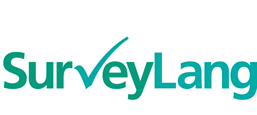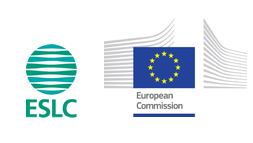
About the survey
The European Commission outlined a detailed strategic approach for the creation of a European Survey on Language Competences in 2005.The European Commission described the purpose of the Survey as being to provide participating countries with comparable data on foreign language competence and knowledge about good practice in language learning. It is also intended to be an indicator to measure progress towards the objectives of improving foreign language learning.
SurveyLang, a group of eight expert organisations in the fields of language assessment, questionnaire design, sampling, translation processes, and psychometrics, was awarded the contract to carry out this survey in February 2008.
What will the survey acheive?
The survey tested the two most widely taught European languages (from English, French, German, Italian and Spanish) in each country from a representative sample of pupils in their final year of lower secondary education.
The survey assessed students’ proficiency in listening, reading and writing. A sample of approximately 1,500 students per language tested, per country was used.
Schools were sampled systematically to ensure the test was representative of the whole student body at the final year of lower secondary education or the second year of upper secondary education for each country.
In addition, students were asked to fill in a Questionnaire about their language learning and other background factors. This helped provide information on how demographic, social, economic and educational variables affect language proficiency across the member states.
Test results are related to the Common European Framework of Reference (CEFR). Establishing links to the CEFR has been a key focus of recent work and research for the language testing members of SurveyLang.
The survey was completed to international education survey standards comparable with other surveys, e.g. PISA, PIRLS and TIMSS.
A full Field Trial of the systems and assessments took place between February and March 2010 and the Main Study took place between February and March 2011. The final report was delivered to the European Commission in the first half of 2012.
Innovation
In undertaking the European Survey on Language Competences, SurveyLang has developed many innovative and exciting new approaches and processes. This is apparent in all areas of the project but particularly in the collaborative language test development process and in the computer-based software system, which delivered the Language Test and Questionnaires for both paper and computer based administrations.
How will the results be used?
The data collected by SurveyLang provides countries with statistically representative results on the language proficiency of secondary school students taking the first and second most taught languages (from English, French, German, Italian and Spanish).The pan-European context of the Survey means that countries are able to use the Questionnaire and Language Test data collected and analysed by SurveyLang to explore factors which impact on language learning and which can shape language policy both within an individual country and across Europe.
Which countries are participating in the survey and what languages are they testing?

The 16 adjudicated entities participating and the first and second languages they are testing in the survey are as follows:
- Belgium (Flemish Community):French, English
- Belgium (French Community): English, German
- Belgium (German Community): French, English
- Bulgaria: English, German
- Croatia: English, German
- England: French, German
- Estonia: English, German
- France: English, Spanish
- Greece: English, French
- Malta: English, Italian
- Netherlands: English, German
- Poland: English, German
- Portugal: English, French
- Slovenia: English, German
- Spain: English, French
- Sweden: English, Spanish

